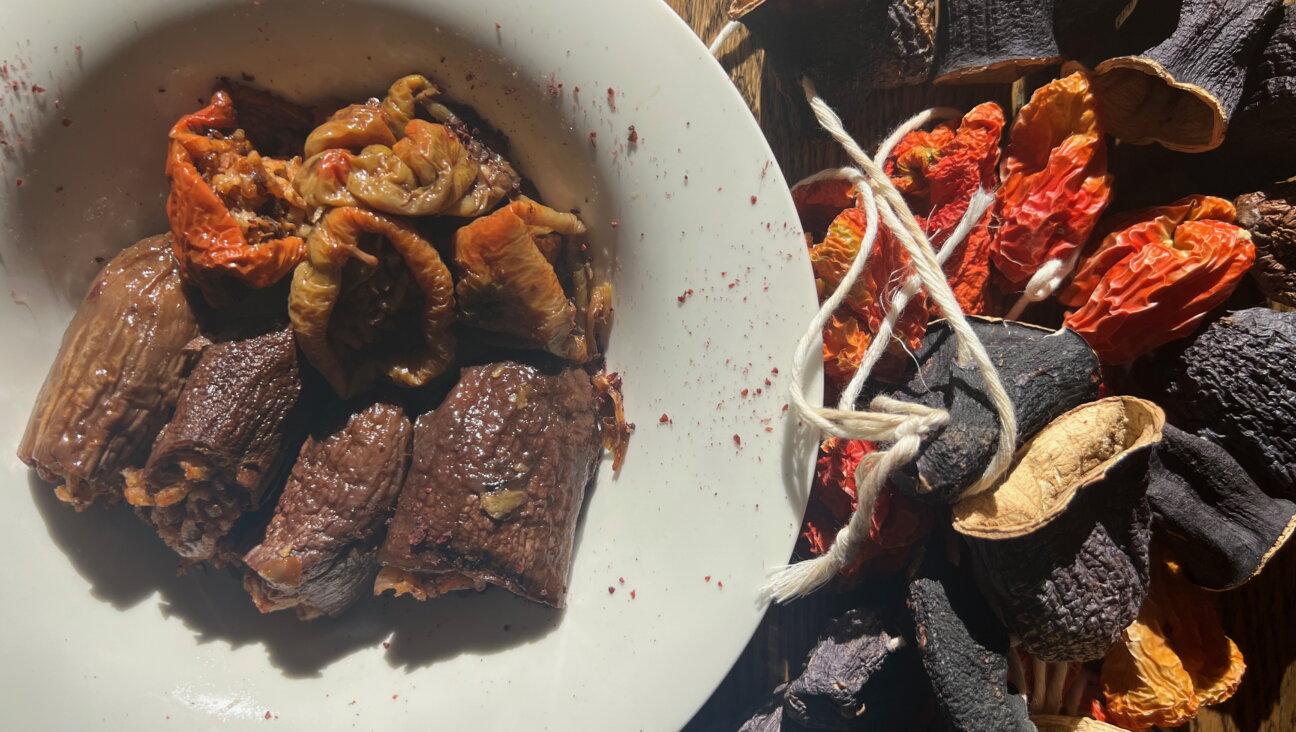How Manischewitz Matzo Helped Make America

Image by iStock
Matzo is bread made from flour of members of the wheat and barley families mixed with water and then, to avoid engendering hametz, baked within 18 minutes of mixing. Historically, it was customary for each household to bake their own matzos. The result would be virtually unrecognizable to modern American Jews, it was a relatively soft, thin round loaf akin to a firm (pocket-less) pita bread.
For thousands of years, matzo was made fresh on a daily basis throughout Passover, except for the Sabbath. Mishaps in the kitchen before Passover were no problem, they were simply thrown out or eaten before the holiday, but mistakes during the holiday contaminated a family’s kitchen with forbidden hametz. Starting in the late Middle Ages, to avoid even the possibility of creating hametz on Passover, Ashkenazim developed a stringency to bake their matzo only before the onset of Passover and never during the festival. At this time a decision was made to make thinner more crisp matzos to further protect against hametz.
In 1886, Rabbi Abramson from the Lithuanian town of Salant purchased the passport of a dead man to escape from Europe — and possibly conscription into the Russian army — the name on the document being Dov Behr Manischewitz. Using his new name, Manischewitz along with his wife, Nesha, immigrated to Cincinnati, where he served as a ritual slaughterer and part-time peddler. For his first Passover in American, with matzo impossible to obtain in his new hometown, Manischewitz made his own. Two years later, he started a small matzo bakery in his basement for family and friends. Demand grew both from the Jewish community and from an unexpected market. At the time, Cincinnati was a prominent starting point for pioneers heading West, who needed durable and nonperishable items to take in their wagons for the lengthy, dangerous trip. Matzo’s keeping ability proved ideal for pioneers.
By 1900, Manischewitz opened a massive factory, revolutionizing the business by switching from coal to gas ovens, allowing for better temperature control. The company built a new oven, at the time the largest on earth. Instead of merely using machines to roll out the dough, Manischewitz established a fully automated factory with machines also mixing, perforating, and cutting the dough. The factory was soon turning out 75,000 pounds of matzo daily, much of it initially purchased by non-Jews heading west. Unlike irregular and frequently charred hand matzos, those made my Manischewitz were uniform and standardized.
At first, Manischewitz’s new factory produced matzo for non-Passover use, where hametz is no problem, as many rabbis were hesitant about using the new machinery for Passover. After the then wealthy Manischewitz donated sizable sums of money to European and Israeli yeshivas, his company eventually received sufficient rabbinic approval to use the machines for Passover matzo as well. The machines were cleaned at the outset of each run, then continuously operated, and cleaned again before the next operation.
Through aggressive marketing and advertising, Manischewitz transformed the matzo bearing his name from a local product to a high-volume commodity shipped throughout the country as well as many parts of the world. The machine transformed matzo from a product generally eaten exclusively during the festival of Passover to a widely available and inexpensive item consumed year round by some non-Jews as well as Jews. (I know a non-Jewish wine teacher who waits each year till after Passover to purchase matzos on sale to use for clearing the palates during wine tastings.) The company’s introduction in 1903 and marketing of packaged matzo meal, ground and packaged by machines, also revolutionized the culinary world transforming the matzo ball from a solely Passover dish into a food enjoyed year round. Today, Manischewitz, produces more than half the matzo consumed in America on Passover.
Gil Marks is the author of five books, including the highly-acclaimed James Beard Award-nominated — the awards ceremony is on May 6 — “Encyclopedia of Jewish Food”.
The Forward is free to read, but it isn’t free to produce

I hope you appreciated this article. Before you go, I’d like to ask you to please support the Forward.
Now more than ever, American Jews need independent news they can trust, with reporting driven by truth, not ideology. We serve you, not any ideological agenda.
At a time when other newsrooms are closing or cutting back, the Forward has removed its paywall and invested additional resources to report on the ground from Israel and around the U.S. on the impact of the war, rising antisemitism and polarized discourse.
This is a great time to support independent Jewish journalism you rely on. Make a gift today!
— Rachel Fishman Feddersen, Publisher and CEO
Support our mission to tell the Jewish story fully and fairly.
Most Popular
- 1

Fast Forward Ye debuts ‘Heil Hitler’ music video that includes a sample of a Hitler speech
- 2

Opinion It looks like Israel totally underestimated Trump
- 3

Culture Cardinals are Catholic, not Jewish — so why do they all wear yarmulkes?
- 4

Fast Forward Student suspended for ‘F— the Jews’ video defends himself on antisemitic podcast
In Case You Missed It
-

Culture Should Diaspora Jews be buried in Israel? A rabbi responds
-

Fast Forward In first Sunday address, Pope Leo XIV calls for ceasefire in Gaza, release of hostages
-

Fast Forward Huckabee denies rift between Netanyahu and Trump as US actions in Middle East appear to leave out Israel
-

Fast Forward Federal security grants to synagogues are resuming after two-month Trump freeze
-
Shop the Forward Store
100% of profits support our journalism
Republish This Story
Please read before republishing
We’re happy to make this story available to republish for free, unless it originated with JTA, Haaretz or another publication (as indicated on the article) and as long as you follow our guidelines.
You must comply with the following:
- Credit the Forward
- Retain our pixel
- Preserve our canonical link in Google search
- Add a noindex tag in Google search
See our full guidelines for more information, and this guide for detail about canonical URLs.
To republish, copy the HTML by clicking on the yellow button to the right; it includes our tracking pixel, all paragraph styles and hyperlinks, the author byline and credit to the Forward. It does not include images; to avoid copyright violations, you must add them manually, following our guidelines. Please email us at [email protected], subject line “republish,” with any questions or to let us know what stories you’re picking up.















